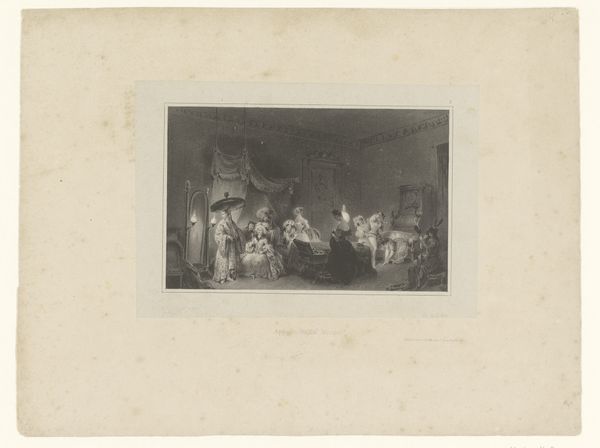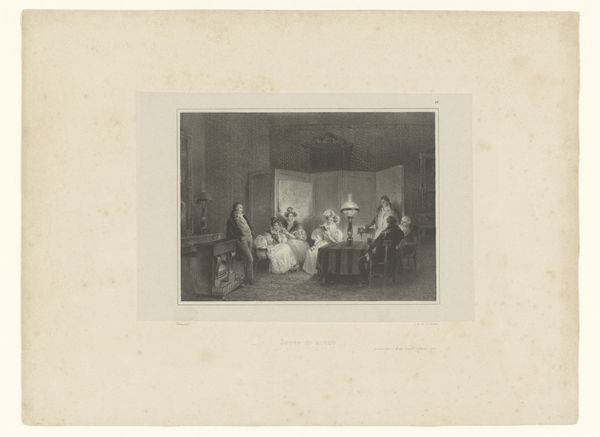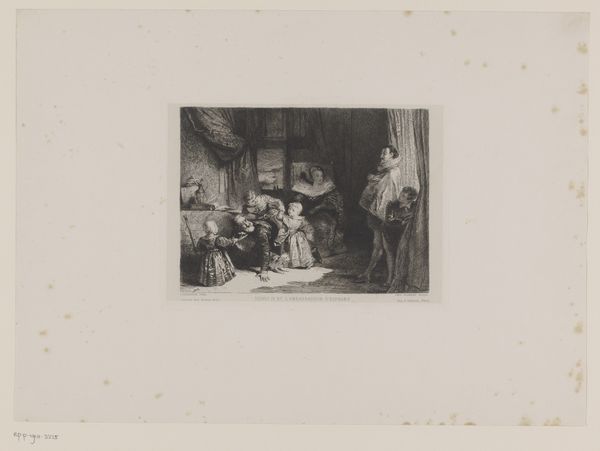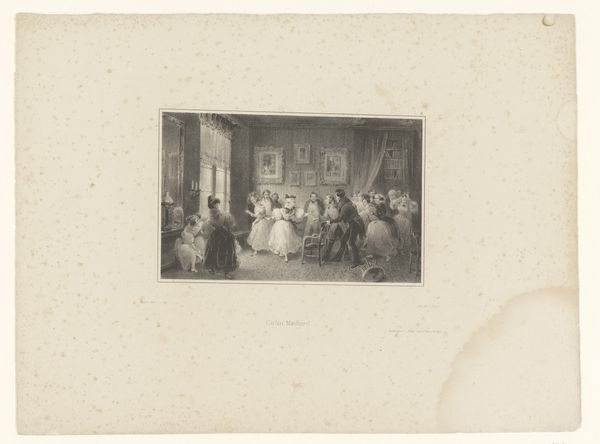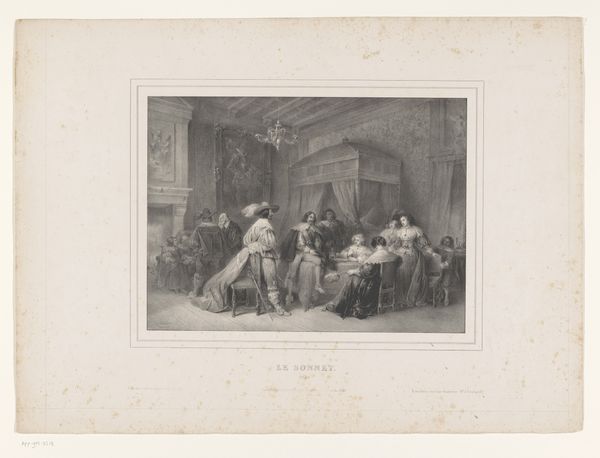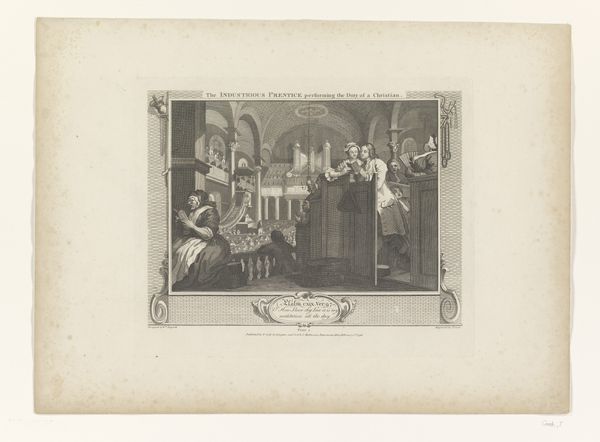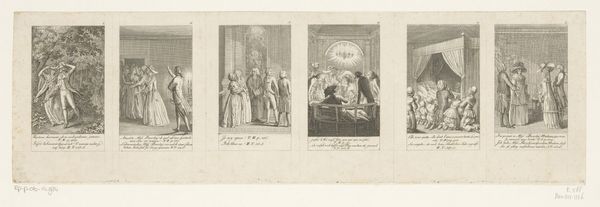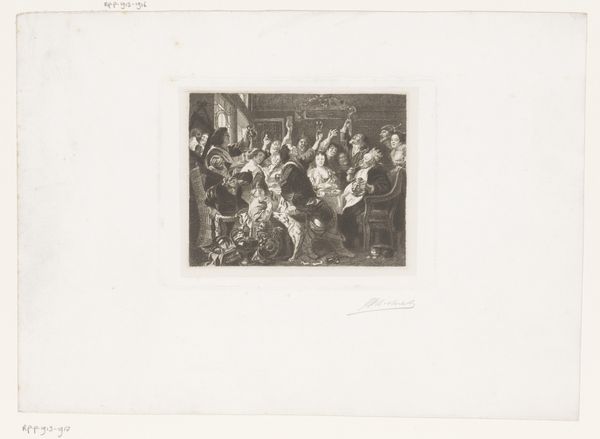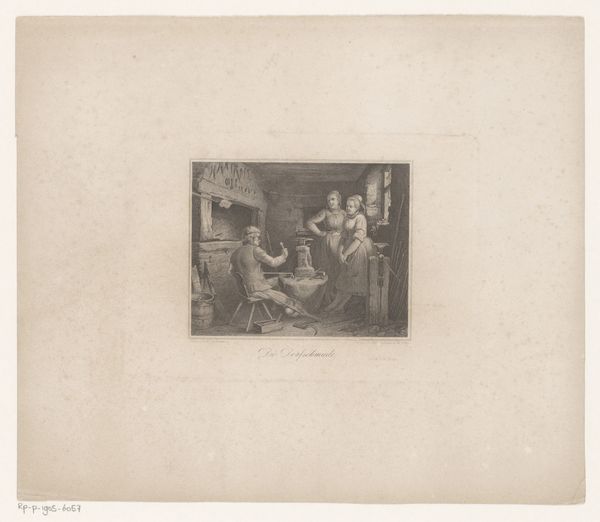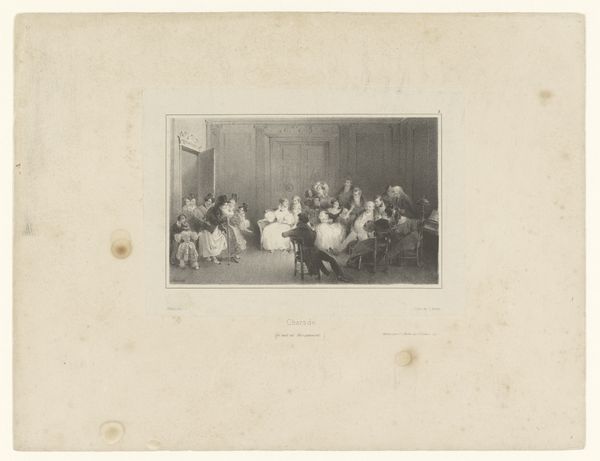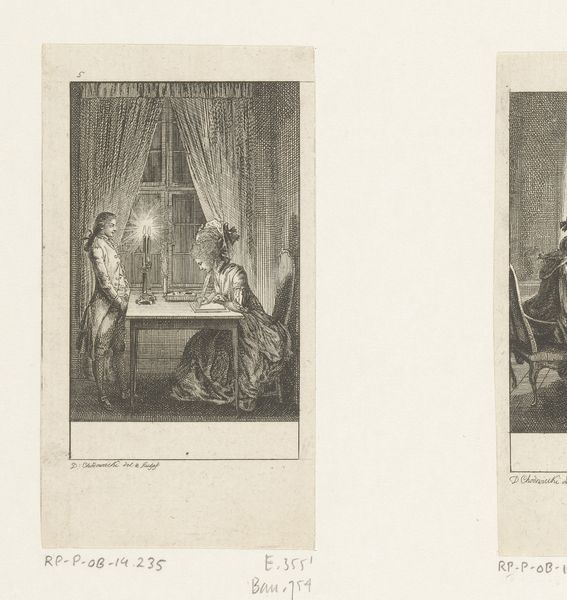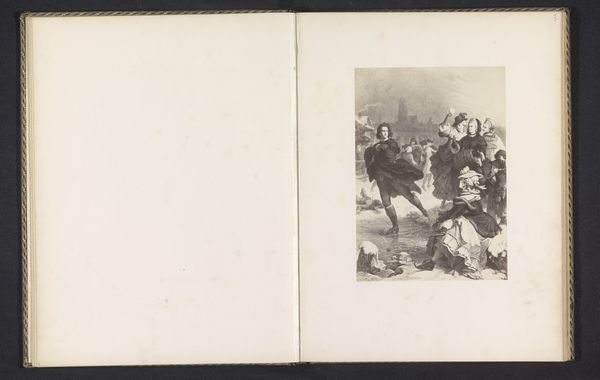
print, etching, engraving
#
narrative-art
#
baroque
# print
#
etching
#
old engraving style
#
history-painting
#
engraving
Copyright: Rijks Museum: Open Domain
Curator: At first glance, there’s a somber, almost theatrical air to this engraving. It feels like a stage production frozen in time. Editor: Indeed. What you're observing is a pair of engravings by Jean Pesne titled "Laatste Avondmaal", or "Last Supper", created between 1680 and 1694. This piece resides here at the Rijksmuseum. It’s executed with exquisite detail. Curator: The use of light is captivating, particularly the contrast between the illuminated figures and the deep shadows. It adds depth, both literal and metaphorical. We have an indoor scene, yet rendered in an antique style, not unlike that of a Roman fresco. What effect might Pesne been after? Editor: Pesne likely intended to imbue the scene with the gravity and significance afforded historical events and, of course, to situate his depiction of The Last Supper within a rich artistic tradition. Baroque art often uses light to dramatize the pivotal moments in a narrative, in this instance the quiet announcement of Christ's betrayal and the impending passion. Notice how all figures on the table turn toward him. Curator: It seems each figure possesses a distinctive emotion etched upon their faces. Observe, though, how this very clarity flattens the complexity inherent in that seminal moment. They each portray, simply, anger, fear, dismay, as types. Editor: Perhaps that clarity was exactly the point. Religious art, especially prints like these which were widely disseminated, often served to teach as much as inspire devotion. Emotions in this view are rendered accessible, each follower processing in his own way. Curator: Still, despite its narrative focus, I find myself drawn to the abstract qualities—the intricate lines forming the architecture, the textures conveyed through delicate hatching and cross-hatching. Even within a recognizable scene, these formal elements assert themselves. Editor: A testament to Pesne’s skill, isn't it? He seamlessly integrates the spiritual and historical with remarkable technical mastery. The very act of translation through print also allows a wider audience to access the power of the subject, fostering shared contemplation and reflection on sacrifice and faith. Curator: Absolutely. Seeing the historical importance married to these very careful construction methods lends new dimensions to appreciating an artistic treatment on such a vital cultural event. Editor: I concur; observing it through a structuralist lens allows us to look again at that which may be overlooked.
Comments
No comments
Be the first to comment and join the conversation on the ultimate creative platform.
